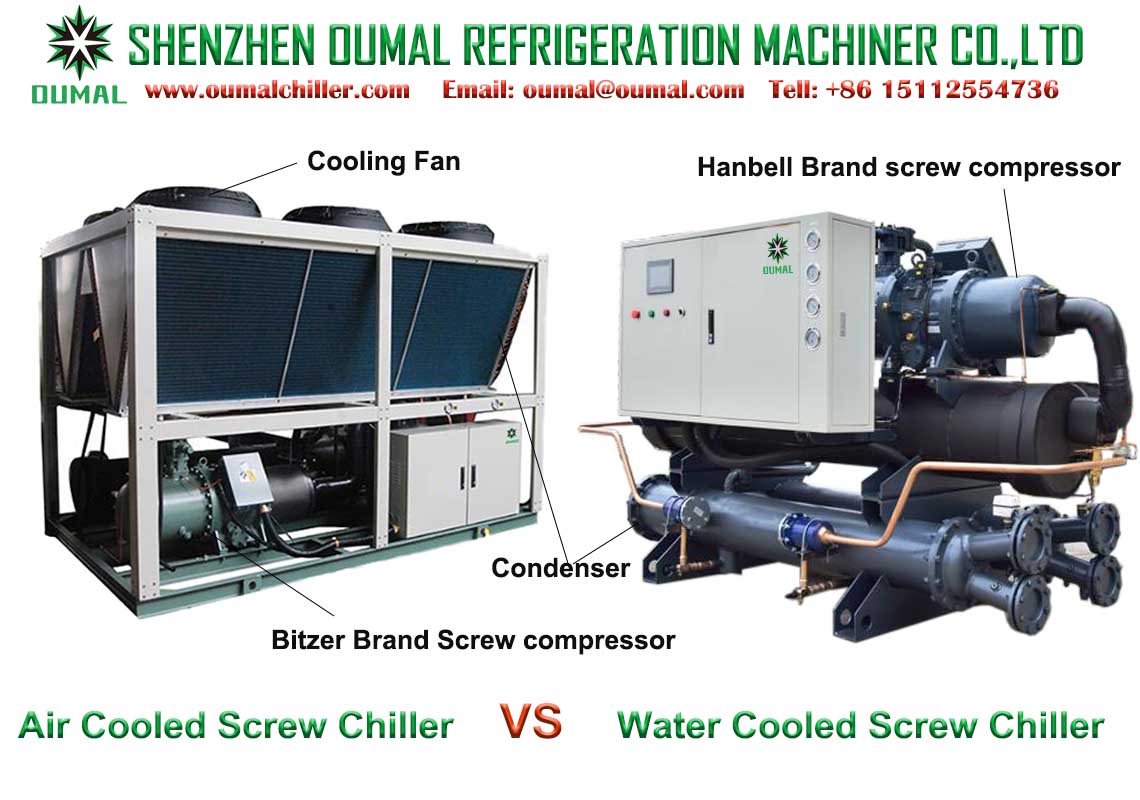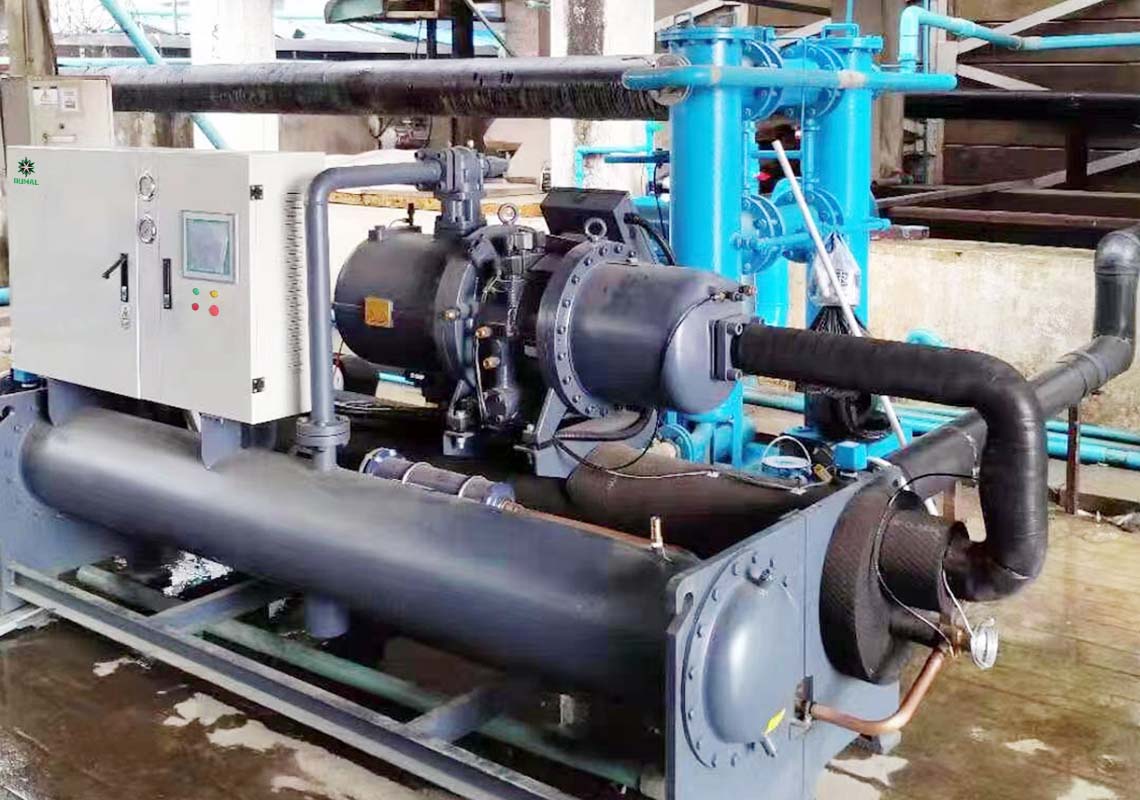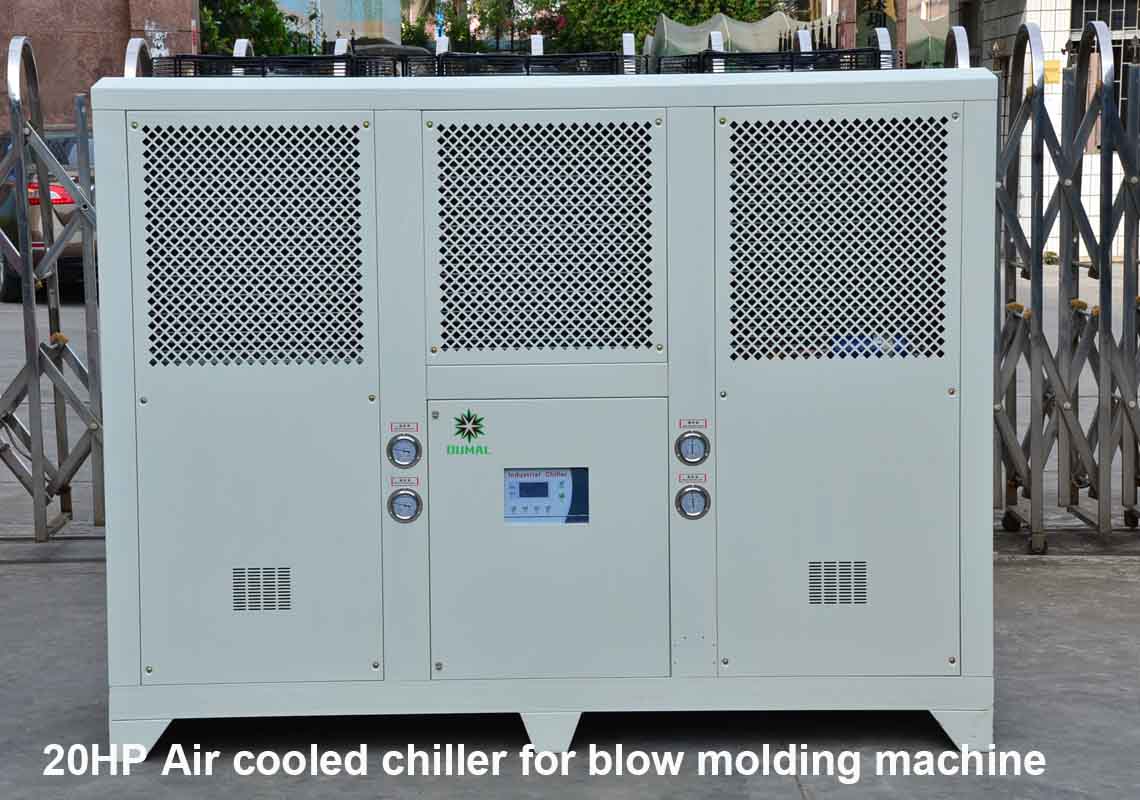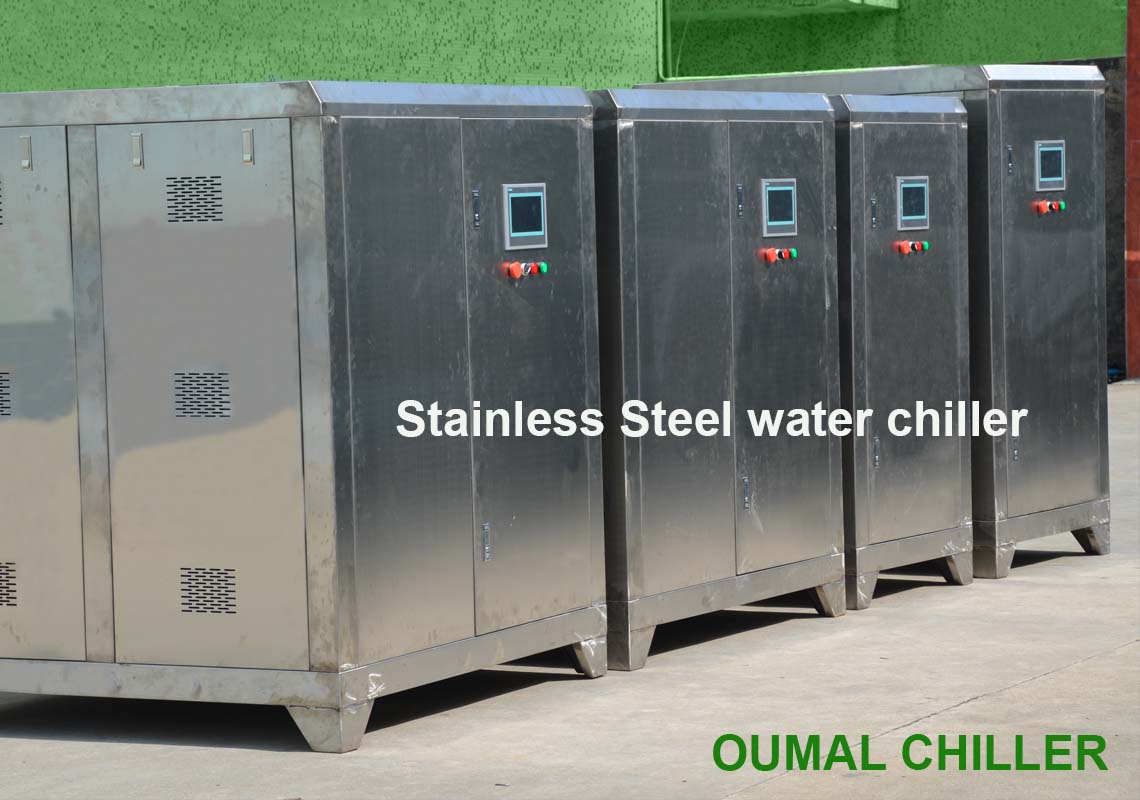The high-pressure failure of the chiller
means that the compressor discharge pressure is too high, which causes the
high-pressure protection relay to operate. The compressor discharge pressure
reflects the condensing pressure, the normal value should be 1.4~1.8MPa, and
the protection value setting is recommended not to exceed 2.0MPa. Because the
long-term pressure is too high, it will cause the compressor to run too much
current, easily burn the motor, and cause damage to the compressor. So what is
the main cause of high pressure failure? How to solve it?
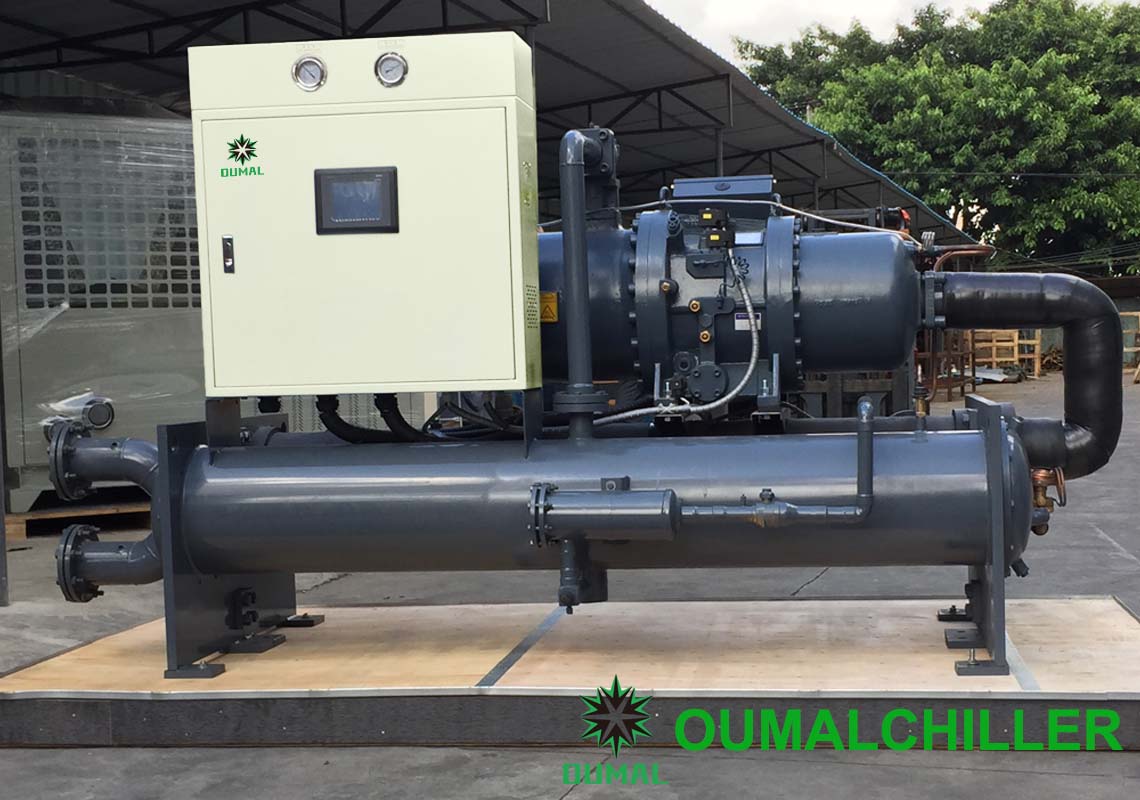
1. Excessive refrigerant charge. This situation
generally occurs after maintenance, and it is manifested as high suction and
discharge pressure and balance pressure, and the compressor operating current
is also high.
Solution: The refrigerant should be
discharged according to the suction and discharge pressure and the balance
pressure and the operating current under the rated conditions until it is
normal.
2. The cooling water temperature is too
high and the condensing effect is poor. The rated working conditions of the
cooling water required by the chiller are between 30 and 35. High water
temperature and poor heat dissipation will inevitably lead to high condensing
pressure. This phenomenon often occurs in high temperature seasons.
Solution: The reason for the high water
temperature may be the failure of the cooling tower, such as the fan is not
turned on or even reversed, the water distributor does not turn, it is
manifested as the cooling water temperature is very high, and it rises rapidly;
the outside temperature is high, the water path is short, and it can be
circulated In this case, the cooling water temperature is generally maintained
at a relatively high level, which can be solved by increasing the storage tank.
3. The cooling water flow is insufficient,
and the rated water flow cannot be reached. The main performance is that the
pressure difference between the inlet and outlet water of the unit becomes
smaller (compared with the pressure difference at the beginning of the system's
operation), and the temperature difference becomes larger.
Solution: The pipeline filter is clogged or
the selection is too fine, and the water permeability is limited. Choose a
suitable filter and clean the filter regularly; or the water pump is small and
does not match the system.
4. The condenser is fouled or blocked.
Condensate water generally uses tap water, it is easy to scale when it is above
30, and because the cooling tower is open, it is directly exposed to the air,
dust and foreign matter can easily enter the cooling water system, causing the
condenser to be dirty and blocking, and the heat exchange area is small. The
efficiency is low, and it also affects the water flow. The performance is that
the pressure difference and temperature difference between the inlet and outlet
water of the unit become larger, the upper and lower temperatures of the
condenser are very high when the condenser is touched by hand, and the
condenser outlet copper pipe is hot.
Solution: The unit should be backwashed regularly,
and chemical cleaning and descaling should be carried out if necessary.
5. False alarms caused by electrical
faults. Because the high-voltage protection relay is damp, poorly contacted or
damaged, the unit electronic board is damp or damaged, and the communication
failure causes a false alarm.
Solution: For this kind of false fault, the
HP fault indicator on the electronic board is often off or slightly bright, and
the manual reset of the high-pressure protection relay is invalid. The running
current of the compressor is normal, and the suction and exhaust pressures are
also normal.
6. The refrigerant is mixed with
non-condensable gases such as air and nitrogen. There is air in the
refrigeration system. In many cases, the pointer of the high-pressure meter
will vibrate severely when there is a lot of air.
Solution: This situation generally occurs
after maintenance, and the vacuum is not complete. It can be evacuated at the
highest point of the condenser after shutdown or re-evacuated to add refrigerant.
If your water chiller machine has a
high-pressure alarm, you can check according to the article. Or you can contact
the water chiller factory to help you solve it. Need to know the details of our
water chiller machine, please visit the products page.
